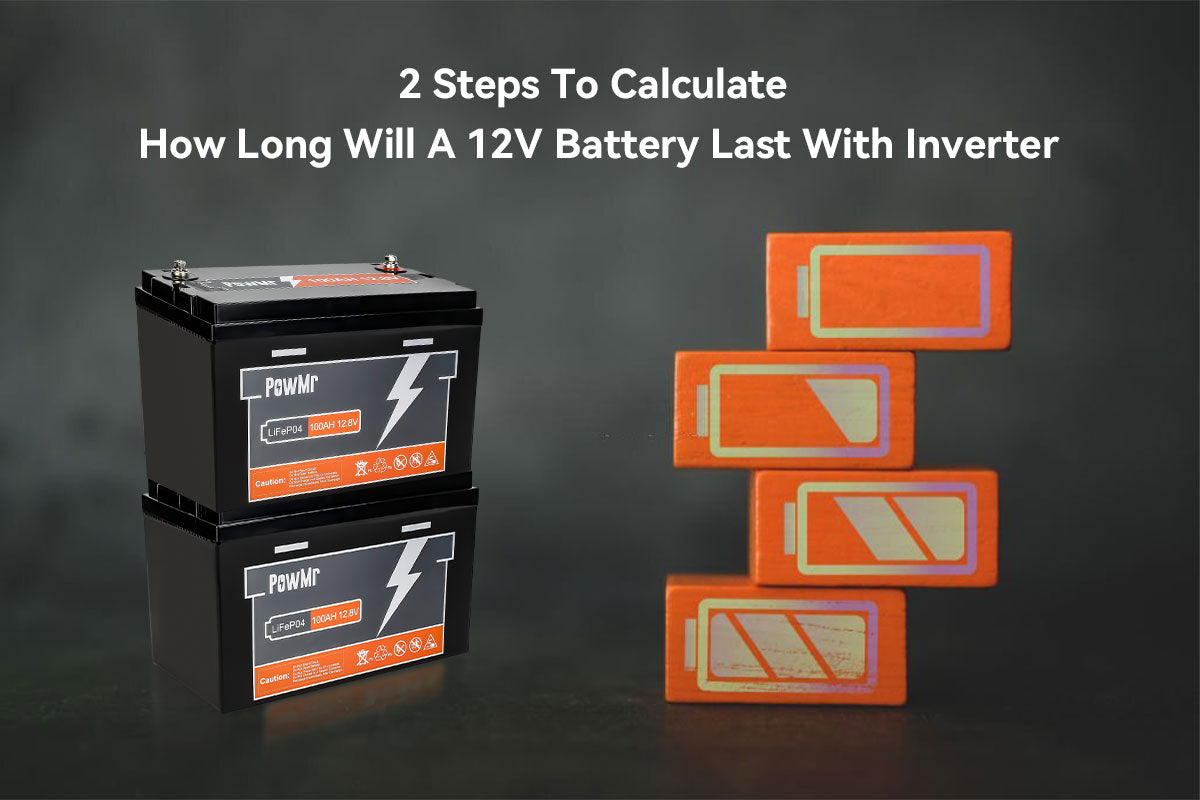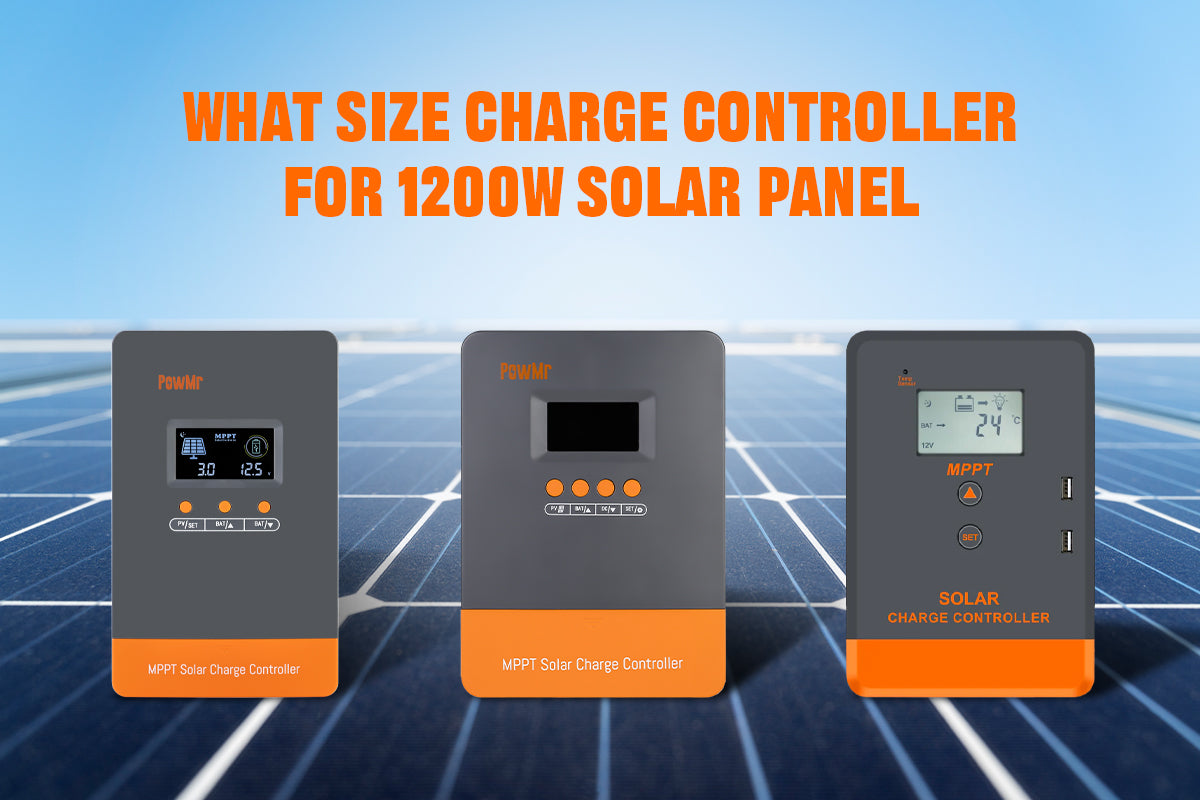ไฟฟ้าดับ—ไม่ว่าจะเกิดจากไฟฟ้าดับทั่วพื้นที่ ความล้มเหลวของอุปกรณ์ หรือการหยุดชะงักอื่น ๆ—สามารถส่งผลกระทบร้ายแรงต่อบ้านของคุณ การหยุดชะงักเหล่านี้ทำให้กิจวัตรประจำวันของคุณเสียไปและทำให้อุปกรณ์ที่จำเป็นไม่ทำงาน โดยเฉพาะในช่วงที่อากาศร้อนจัด นั่นคือเหตุผลที่การมีไฟฟ้าสำรองเป็นสิ่งสำคัญ
โดยทั่วไปแล้ว เครื่องกำเนิดไฟฟ้าเป็นผู้จัดการความต้องการนี้ แต่ระบบพลังงานในบ้านยุคปัจจุบันกำลังพัฒนา ไม่ใช่แค่เครื่องกำเนิดไฟฟ้าอีกต่อไป อินเวอร์เตอร์มีบทบาทสำคัญในการสำรองและแจกจ่ายพลังงาน
นี่ทำให้เกิดคำถามที่พบบ่อย: ฉันสามารถเพิ่มอินเวอร์เตอร์กับเครื่องกำเนิดไฟฟ้าได้หรือไม่? คำตอบคือใช่ ในกรณีส่วนใหญ่ อินเวอร์เตอร์สามารถจับคู่กับเครื่องกำเนิดไฟฟ้าในระบบไฮบริดเพื่อการจัดการพลังงานที่มีประสิทธิภาพและเชื่อถือได้มากขึ้น
ในบทความนี้ เราจะพูดถึงวิธีการเพิ่มอินเวอร์เตอร์ภายนอกไปยังเครื่องกำเนิดไฟฟ้าอย่างถูกต้อง และข้อควรพิจารณาที่สำคัญเมื่อเชื่อมต่อเครื่องกำเนิดไฟฟ้ากับอินเวอร์เตอร์
อินเวอร์เตอร์สำหรับเครื่องกำเนิดไฟฟ้าคืออะไร
ฟังก์ชันของเครื่องกำเนิดไฟฟ้าและอินเวอร์เตอร์แตกต่างกัน เครื่องกำเนิดไฟฟ้าเป็นอุปกรณ์ที่ผลิตไฟฟ้าจากแหล่งพลังงานภายนอก เช่น เชื้อเพลิงหรือดีเซล ในขณะที่อินเวอร์เตอร์เป็นอุปกรณ์ที่แปลงไฟฟ้าจากรูปแบบหนึ่งไปยังอีกรูปแบบหนึ่ง โดยปกติจาก DC เป็น AC
แต่เพื่อตอบสนองความต้องการสำรองไฟ ชาร์จเจอร์อินเวอร์เตอร์หลายรุ่นหรืออินเวอร์เตอร์ไฮบริดถูกออกแบบมาเพื่อวัตถุประสงค์ในการ ดึงไฟฟ้าจากเครื่องกำเนิดไฟฟ้า เพื่อจ่ายพลังงานให้กับโหลดที่เชื่อมต่อหรือชาร์จแบตเตอรี่ รักษาให้อยู่ในสถานะการชาร์จที่ปลอดภัย (SoC)
ดังนั้น จึงเป็นการฉลาดที่จะเพิ่มอินเวอร์เตอร์ภายนอกให้กับเครื่องกำเนิดไฟฟ้าเพื่อสร้างระบบพลังงานไฮบริด ซึ่งมีความเกี่ยวข้องอย่างยิ่งสำหรับ ระบบเก็บพลังงานแสงอาทิตย์ ในช่วงหลายวันที่มีสภาพอากาศไม่ดีและมีการผลิตพลังงานแสงอาทิตย์น้อยหรือไม่มีเลย หรือหากการใช้พลังงานของคุณเกินกว่าที่ระบบพลังงานแสงอาทิตย์ของคุณสามารถจ่ายได้
อินเวอร์เตอร์สามารถชาร์จแบตเตอรี่ได้อย่างชาญฉลาดเมื่อเครื่องกำเนิดไฟฟ้าทำงาน และจากนั้นสลับไปใช้พลังงานจากแบตเตอรี่เมื่อเครื่องกำเนิดไฟฟ้าปิด อินเวอร์เตอร์บางรุ่นยังทำหน้าที่เป็นตัวควบคุมการชาร์จ เพื่อให้แน่ใจว่าแบตเตอรี่ได้รับการชาร์จอย่างปลอดภัยและมีประสิทธิภาพ
วิธีเพิ่มอินเวอร์เตอร์ภายนอกสำหรับเครื่องกำเนิดไฟฟ้า - 5 ขั้นตอน
คุณสามารถจับคู่เครื่องกำเนิดไฟฟ้ากับเครื่องชาร์จอินเวอร์เตอร์ PowMr หรืออินเวอร์เตอร์ไฮบริดเพื่อทดแทนพลังงานจากกริดในช่วงไฟดับ สิ่งสำคัญคือต้องแน่ใจว่าเครื่องกำเนิดไฟฟ้าให้เอาต์พุตคลื่นไซน์บริสุทธิ์เพื่อหลีกเลี่ยงปัญหากับอุปกรณ์อิเล็กทรอนิกส์ที่ไวต่อความไวหรือการชาร์จแบตเตอรี่
ลองดู POW-HVM6.2K-PRO เป็นตัวอย่าง—ตัวเลือกที่ยอดเยี่ยมสำหรับระบบพลังงานแสงอาทิตย์และพลังงานสำรอง มันมี พอร์ตอินพุต AC สองพอร์ต: หนึ่งสำหรับกริดยูทิลิตี้และอีกหนึ่งสำหรับอินพุตเครื่องกำเนิดไฟฟ้า

อินพุตเครื่องกำเนิดไฟฟ้าเฉพาะ ช่วยให้ง่ายต่อการเชื่อมต่อ และรองรับการสลับอย่างราบรื่นระหว่างไฟฟ้าจากกริดและเครื่องกำเนิดไฟฟ้า นอกจากนี้ยังมีเอาต์พุต AC คู่เพื่อการจัดการโหลดที่ยืดหยุ่นมากขึ้น
ขั้นตอนที่ 1: ให้ความสำคัญกับความปลอดภัย
ก่อนทำการเชื่อมต่อใด ๆ ให้แน่ใจว่าส่วนประกอบทั้งหมดปิดการทำงานอย่างสมบูรณ์แล้ว ซึ่งรวมถึงเครื่องกำเนิดไฟฟ้า อินเวอร์เตอร์ แบตเตอรี่ และแหล่งจ่ายไฟจากแสงอาทิตย์ (ถ้ามีการเชื่อมต่อ) ถอดหรือปิดเบรกเกอร์ตามความจำเป็น
ขั้นตอนที่ 2: ติดตั้งกล่องอินเล็ทของเครื่องกำเนิดไฟฟ้า
ติดตั้ง ช่องเสียบเครื่องกำเนิดไฟฟ้า (ช่องเสียบตัวผู้) ใกล้กับอินเวอร์เตอร์ของคุณ นี่คือที่ที่คุณจะเสียบสายต่อจากเครื่องกำเนิดไฟฟ้า เลือกช่องเสียบที่ตรงกับประเภทปลั๊กของเครื่องกำเนิดไฟฟ้าของคุณ
ขั้นตอนที่ 3: ต่อสายไฟจากทางเข้าไปยังกล่องต่อสายหรือสวิตช์โอน
จากด้านหลังของกล่องทางเข้าของเครื่องกำเนิดไฟฟ้า ให้เดินสายไฟ AC ขนาดที่เหมาะสมเข้าสู่กล่องต่อสาย สายไฟจะมีสายไฟฟ้ากระแสสลับ สายศูนย์ และสายดิน ใช้ท่อร้อยสายหรือการป้องกันสายเคเบิลที่เหมาะสมตามสภาพแวดล้อมการติดตั้งของคุณและปฏิบัติตามข้อกำหนดท้องถิ่นทั้งหมด
บันทึก:
เราขอแนะนำอย่างยิ่งให้คุณตรวจสอบและปฏิบัติตามกฎระเบียบของรัฐบาลกลาง รัฐ และท้องถิ่นที่เกี่ยวข้องกับการต่อสายดินทั้งหมด
ขั้นตอนที่ 4: เชื่อมต่อกล่องต่อสายกับอินเวอร์เตอร์ที่ช่องป้อนไฟ AC
ต่อสายไฟจากกล่องต่อสายไปยังบล็อกขั้วต่ออินเวอร์เตอร์ที่อินพุต AC เปิดแผงอินพุต AC ของอินเวอร์เตอร์และเชื่อมต่อสายไฟเฟสและนิวตรอนกับขั้วต่อที่สอดคล้องกัน ยึดสายไฟแต่ละเส้นอย่างถูกต้องและขันสกรูให้แน่นตามแรงบิดที่แนะนำเพื่อป้องกันการเชื่อมต่อที่หลวม
ขั้นตอนที่ 5: เสียบเครื่องกำเนิดไฟฟ้าและเปิดเครื่องแปลงไฟ
เมื่อการเดินสายไฟทั้งหมดเสร็จสมบูรณ์และเชื่อมต่ออย่างมั่นคง ให้เสียบสายต่อขยายของเครื่องกำเนิดไฟฟ้าเข้ากับกล่องอินพุต จากนั้นเชื่อมต่อแบตเตอรี่และการเชื่อมต่อโหลดอีกครั้ง โดยปล่อยให้การป้อนข้อมูลจากกริดปิดอยู่เพื่อแยกและทดสอบการเชื่อมต่อเครื่องกำเนิดไฟฟ้า เปิดเครื่องกำเนิดไฟฟ้า เปิดอินเวอร์เตอร์ และตรวจสอบหน้าจอแสดงผลเพื่อยืนยันว่ามีการตรวจจับการป้อนข้อมูล AC จากเครื่องกำเนิดไฟฟ้า
ขึ้นอยู่กับการตั้งค่าของอินเวอร์เตอร์ มันอาจเริ่มชาร์จแบตเตอรี่แบงค์โดยอัตโนมัติหรือเข้าสู่โหมดบายพาสเพื่อจ่ายพลังงานโดยตรงไปยังโหลด
สิ่งที่คุณต้องพิจารณาเมื่อเชื่อมต่ออินเวอร์เตอร์กับเครื่องกำเนิดไฟฟ้า
1. วิธีการเริ่มต้น
เมื่อเลือกวิธีเริ่มต้นสำหรับเครื่องกำเนิดไฟฟ้าของคุณ คุณมีตัวเลือกหลักสองแบบ: เริ่มต้นด้วยตนเองและเริ่มต้นอัตโนมัติ.
การเริ่มต้นด้วยตนเองเป็นเรื่องปกติสำหรับผู้ใช้ที่ต้องการควบคุมการเปิดเครื่องกำเนิดไฟฟ้าเอง—เหมาะสำหรับเมื่อระดับแบตเตอรี่ลดลงหรือเมื่อใช้อุปกรณ์ที่ใช้พลังงานสูง วิธีนี้เป็นที่นิยมและให้ความยืดหยุ่น
ในทางกลับกัน ระบบสตาร์ทอัตโนมัติจะเปิดเครื่องกำเนิดไฟฟ้าโดยอัตโนมัติเมื่อจำเป็น เพื่อให้แน่ใจว่ามีกำลังไฟฟ้าอย่างต่อเนื่อง ซึ่งต้องใช้เครื่องกำเนิดไฟฟ้าที่รองรับฟังก์ชันสตาร์ทอัตโนมัติ
อย่างไรก็ตาม การตั้งค่าเหล่านี้ ไม่สามารถถูกแทนที่ด้วยตนเองได้ อาจทำให้แบตเตอรี่สตาร์ทของเครื่องกำเนิดไฟฟ้าหมดเร็วขึ้นเมื่อเวลาผ่านไป และอาจล้มเหลวหากอินเวอร์เตอร์ปิดตัวอย่างรวดเร็วเนื่องจากแบตเตอรี่ที่อ่อนแอหรือโหลดสูงอย่างกะทันหัน
การใช้ สวิตช์โอนถ่ายอัตโนมัติ (ATS) ร่วมกับเครื่องกำเนิดไฟฟ้าเป็นทางเลือกที่ใช้งานได้จริง—โดยเฉพาะสำหรับการตั้งค่าที่สำคัญหรือไม่มีผู้ดูแล
2. ขนาดของเครื่องกำเนิดไฟฟ้าและกระแสชาร์จ
คุณสามารถเชื่อมต่อเครื่องกำเนิดไฟฟ้ากับอินเวอร์เตอร์ได้ไม่ว่าจะมีกำลังไฟสูงกว่าหรือต่ำกว่ากำลังไฟที่อินเวอร์เตอร์กำหนด หาก กำลังไฟของเครื่องกำเนิดต่ำกว่า จำเป็นต้องลดกระแสชาร์จจากยูทิลิตี้ของอินเวอร์เตอร์
สำหรับเครื่องกำเนิดไฟฟ้าที่มีกำลังสูงกว่า ไม่จำเป็นต้องเปลี่ยนแปลงใดๆ อินเวอร์เตอร์จะใช้กำลังขับเต็มที่ของเครื่องกำเนิดไฟฟ้าโดยไม่มีความเสี่ยงต่อความเสียหาย ความยืดหยุ่นนี้ช่วยให้ใช้งานได้อย่างปลอดภัยกับเครื่องกำเนิดไฟฟ้าขนาดต่างๆ โดยไม่ต้องกังวลเกี่ยวกับการเกินความจุของอินเวอร์เตอร์
3. ประเภทเครื่องกำเนิดไฟฟ้าและคุณภาพพลังงาน
และควรเน้นย้ำว่าแม้ว่าคุณจะใช้เครื่องกำเนิดไฟฟ้ากระแสสลับ การจับคู่กับอินเวอร์เตอร์ภายนอกที่เหมาะสมกับเครื่องกำเนิดของคุณจะเป็นสิ่งที่ดีที่สุด
เครื่องกำเนิดไฟฟ้าหลายเครื่องไม่สามารถรักษาความถี่ให้คงที่ได้ และแรงดันไฟฟ้าอาจเปลี่ยนแปลง ซึ่งอาจทำให้อุปกรณ์ของคุณเสียหายได้ อย่างไรก็ตาม เมื่อใช้เครื่องกำเนิดไฟฟ้าร่วมกับอินเวอร์เตอร์ สิ่งสำคัญคือต้องตรวจสอบให้แน่ใจว่าเอาต์พุตคลื่นไซน์และช่วงแรงดันไฟฟ้าของเครื่องกำเนิดไฟฟ้าตรงกับข้อกำหนดการป้อนข้อมูลของอินเวอร์เตอร์ มิฉะนั้น อินเวอร์เตอร์อาจทำงานไม่ถูกต้อง
หากคุณต้องการปรับปรุงคุณภาพพลังงาน โปรดทราบว่าอินเวอร์เตอร์ส่วนใหญ่ไม่สามารถแปลงคลื่นไซน์ที่แก้ไขแล้วเป็นคลื่นไซน์บริสุทธิ์ได้ เครื่องกำเนิดไฟฟ้าอินเวอร์เตอร์ มอบพลังงานที่สะอาดและเชื่อถือได้มากขึ้นตามการออกแบบ
บทความที่เกี่ยวข้อง:อินเวอร์เตอร์คลื่นไซน์บริสุทธิ์ vs อินเวอร์เตอร์คลื่นไซน์ดัดแปลง - การเปรียบเทียบอย่างละเอียด
เครื่องกำเนิดไฟฟ้าชนิดอินเวอร์เตอร์กับเครื่องกำเนิดไฟฟ้าปกติ แตกต่างกันอย่างไร?
ก่อนที่จะลงทุนในอินเวอร์เตอร์สำหรับเครื่องกำเนิดไฟฟ้าของคุณ สิ่งสำคัญคือต้องยืนยันก่อนว่าคุณมีเครื่องกำเนิดไฟฟ้าประเภทใด
เครื่องกำเนิดไฟฟ้าปกติคืออะไร?
เครื่องกำเนิดไฟฟ้าปกติใช้เครื่องกำเนิดไฟฟ้ากลไกเพื่อผลิตกระแสสลับ (หรือ AC) โดยปกติจะใช้เชื้อเพลิงจากน้ำมันเบนซิน ดีเซล หรือก๊าซธรรมชาติ ซึ่งมีราคาถูกกว่า แต่การผลิตก๊าซคาร์บอนมอนอกไซด์เป็นปัจจัยที่น่ากังวล
เครื่องกำเนิดไฟฟ้าชนิดอินเวอร์เตอร์คืออะไรและทำงานอย่างไร?
เครื่องกำเนิดไฟฟ้าอินเวอร์เตอร์ ใช้อิเล็กทรอนิกส์ขั้นสูงและแม่เหล็กในการผลิตไฟฟ้ากระแสสลับ (AC) ซึ่งจะถูกแปลงเป็นไฟฟ้ากระแสตรง (DC) และกลับมาเป็นไฟฟ้ากระแสสลับ (AC) อีกครั้งโดยมีการควบคุมแรงดันไฟฟ้าและความถี่อย่างแม่นยำมาก
สิ่งนี้ช่วยให้เครื่องกำเนิดไฟฟ้าอินเวอร์เตอร์สามารถผลิตกระแสไฟฟ้ากระแสสลับที่สะอาดและเสถียร ซึ่งปลอดภัยสำหรับอุปกรณ์อิเล็กทรอนิกส์และเครื่องใช้ไฟฟ้าที่ไวต่อความเสียหาย เครื่องกำเนิดไฟฟ้าอินเวอร์เตอร์ยังมีความสามารถในการปรับความเร็วของเครื่องยนต์ให้สอดคล้องกับภาระงาน ซึ่งทำให้ประหยัดน้ำมันเชื้อเพลิงมากขึ้นและเงียบกว่ากระแสไฟฟ้าปกติ
นี่คือการเปรียบเทียบอย่างรวดเร็วระหว่างเครื่องกำเนิดไฟฟ้าอินเวอร์เตอร์และเครื่องกำเนิดไฟฟ้าปกติเพื่อเน้นความแตกต่างที่สำคัญของพวกเขาในทันที
| คุณสมบัติ | เครื่องกำเนิดไฟฟ้าอินเวอร์เตอร์ | เครื่องกำเนิดไฟฟ้าแบบธรรมดา |
|---|---|---|
| กำลังขับ | AC ที่สะอาดและเสถียร (คลื่นไซน์บริสุทธิ์) | แอร์ไม่เสถียร อาจมีการเปลี่ยนแปลง |
| เทคโนโลยี | แปลงไฟ AC → DC → AC โดยใช้เทคโนโลยีอิเล็กทรอนิกส์ขั้นสูง | เครื่องกำเนิดไฟฟ้ากระแสสลับแบบกลไกผลิตไฟฟ้ากระแสสลับโดยตรง |
| การควบคุมเครื่องยนต์ | ปรับความเร็วตามภาระ (ความเร็วแปรผัน) | วิ่งด้วยความเร็วคงที่ |
| ประหยัดน้ำมัน | ประหยัดน้ำมันยิ่งขึ้น | ประสิทธิภาพน้อยลง |
| ระดับเสียง | เงียบลง | เสียงดังกว่า |
| ค่าใช้จ่าย | สูงกว่า (เนื่องจากส่วนประกอบขั้นสูง) | ต่ำกว่า แต่ อาจต้องใช้ อินเวอร์เตอร์ ภายนอก |
| การปล่อยมลพิษ | การปล่อยมลพิษต่ำลง | ปริมาณการปล่อย CO สูงขึ้น |
บทสรุป
การเพิ่มอินเวอร์เตอร์ให้กับเครื่องกำเนิดไฟฟ้าช่วยเพิ่มพลังงานสำรอง โดยให้ประสิทธิภาพและความน่าเชื่อถือที่ดียิ่งขึ้นในช่วงไฟดับ การตั้งค่าฮาร์ดไฮบริดช่วยให้สลับระหว่างพลังงานจากเครื่องกำเนิดไฟฟ้าและการเก็บพลังงานในแบตเตอรี่ได้อย่างราบรื่น สิ่งสำคัญคือต้องพิจารณาประเภทของเครื่องกำเนิดไฟฟ้า คุณภาพพลังงาน และส่วนประกอบของระบบเพื่อความเข้ากันได้และความปลอดภัย ไม่ว่าจะใช้วิธีการสตาร์ทด้วยตนเองหรืออัตโนมัติ การตั้งค่านี้ช่วยให้การทำงานมีประสิทธิภาพสูงสุด ทำให้เป็นการลงทุนที่ชาญฉลาดสำหรับพลังงานบ้านที่เชื่อถือได้และยั่งยืน



